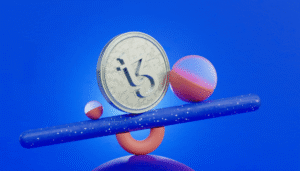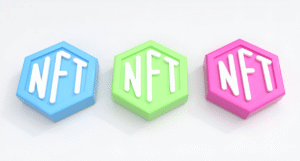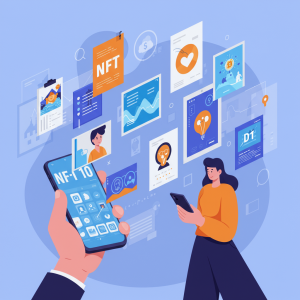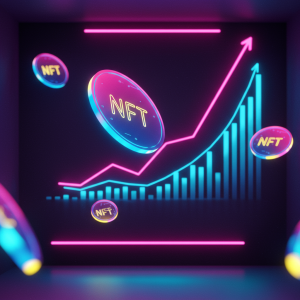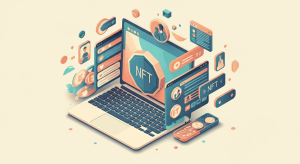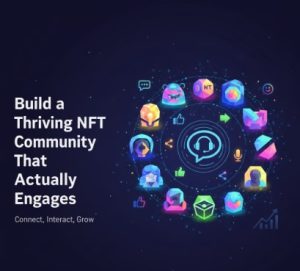NFT Intellectual Property Rights: Navigating the Legal Landscape
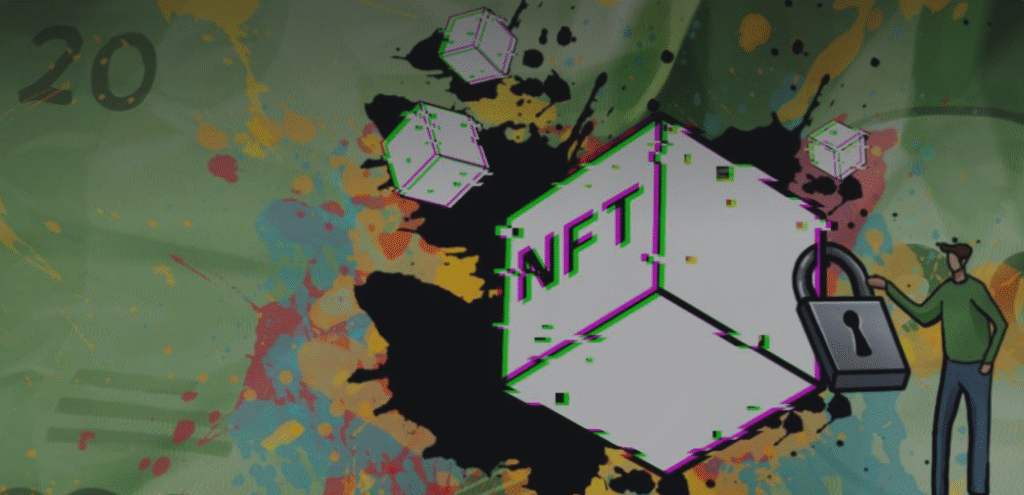
The explosion of NFT markets has transformed digital ownership, yet many creators and collectors remain confused about the intellectual property rights associated with these blockchain-based assets. This confusion stems from a fundamental misunderstanding: purchasing an NFT doesn’t automatically transfer copyright or other IP rights unless explicitly stated in the smart contract or accompanying documentation.
The Basic Framework of NFT Rights
When someone purchases an NFT, they typically acquire ownership of a unique token on the blockchain—a digital certificate of authenticity. However, this token ownership remains separate from the intellectual property rights of the underlying work. The distinction parallels traditional art markets: buying a physical painting gives you ownership of the canvas but not the right to reproduce the image commercially.
Most NFT transactions default to granting buyers display rights—permission to showcase the purchased work in digital galleries, social media profiles, or virtual worlds. These limited rights explain why collectors pay substantial sums despite not receiving full copyright control.
Some pioneering creators have started experimenting with expanded rights models. Projects like Bored Ape Yacht Club made headlines by granting commercial exploitation rights to token holders, allowing them to create derivatives, merchandise, and adaptations of their specific apes. This generous approach contrasts sharply with more restrictive projects that reserve all commercial rights for original creators.
For platforms and marketplaces, navigating these varying models presents significant challenges. OpenSea and other marketplaces must accommodate diverse terms while providing clear information to potential buyers about exactly what rights accompany each token.
Copyright Fundamentals and NFTs
Copyright protection attaches automatically to original creative works fixed in tangible media—including digital files. This protection grants creators exclusive rights to reproduce, distribute, display, perform, and create derivatives of their work.
NFTs introduce novel questions about how these traditional rights apply in blockchain contexts. For instance, minting an NFT requires copying the original work to blockchain storage solutions like IPFS. Without proper permissions, this process could technically infringe copyright.
For creators minting their own work, this poses no issue. However, third-party minting—creating NFTs from someone else’s creative work—raises serious legal concerns. Several high-profile cases have emerged involving unauthorized NFT minting of artists’ work, leading to takedown requests and litigation.
The transformative nature of blockchain technology doesn’t exempt participants from existing copyright laws. Courts will likely apply established intellectual property frameworks to NFT disputes, focusing on substantive rights rather than technical implementation details.
At NFTMarketo, we’ve observed increasing sophistication in how creators approach these rights questions, with many incorporating detailed license agreements into their NFT smart contracts to clearly define permissible uses.
Trademark Considerations
Trademark issues present another crucial dimension of NFT intellectual property concerns. Trademarks protect brand names, logos, and distinctive elements that identify product sources.
Several luxury brands and entertainment companies have taken legal action against NFT projects they claim infringe their trademarks. Hermès’ lawsuit against MetaBirkins creator Mason Rothschild established important precedent around how courts might balance trademark protections against artistic expression in the NFT space.
For creators incorporating recognizable brands or characters into their NFT projects, careful consideration of potential trademark infringement becomes essential. While parody and artistic commentary enjoy certain protections, commercial projects that create consumer confusion face greater legal risk.
The geographical nature of trademark protection adds further complexity to globally accessible NFT marketplaces. A project might face different legal standards across jurisdictions, requiring thoughtful approaches to international market access.
Smart Contracts and License Enforcement
Smart contracts provide powerful mechanisms for encoding and enforcing license terms. These self-executing programs can automatically implement royalty payments, usage restrictions, and rights transfers without requiring trusted intermediaries.
However, technical implementation often falls short of legal requirements. Many NFT smart contracts contain minimal or ambiguous terms regarding intellectual property rights. This gap between code functionality and legal clarity creates uncertainty for all parties.
Best practices emerging in the industry include incorporating complete license terms by reference, linking immutable license documentation, and using plain language to describe granted rights. These approaches help bridge the gap between technical and legal domains.
Some projects utilize tiered licensing models, where different token levels convey different usage rights. For example, basic tokens might grant personal display rights, while premium tokens include limited commercial exploitation rights with revenue caps.
Collective Rights Management
Communities have begun developing collective approaches to NFT rights management. These initiatives seek to establish standard licensing frameworks, resolve disputes efficiently, and advocate for creator-friendly policies.
Decentralized autonomous organizations (DAOs) sometimes serve as collective rights management bodies, establishing community standards and potentially taking enforcement actions against perceived infringement. These emerging governance structures represent a novel approach to intellectual property management outside traditional legal frameworks.
Industry coalitions of artists, platforms, and legal experts work toward standardizing rights expressions in NFT metadata. These standards aim to make rights information machine-readable and universally accessible across marketplaces and wallets.
Despite these efforts, significant challenges remain in achieving consistent rights management across a decentralized ecosystem with diverse stakeholders and rapidly evolving technology.
Territorial Jurisdiction Challenges
The borderless nature of blockchain technology creates substantial jurisdictional complexity for intellectual property enforcement. NFTs minted in one country might be traded on platforms based in another and purchased by collectors in yet another jurisdiction.
Courts continue grappling with how to apply territorially limited intellectual property regimes to decentralized technologies. Some focus on the location of key parties, while others examine server locations or target markets to establish jurisdiction.
This uncertainty creates both risks and opportunities. Projects can potentially structure operations to minimize exposure to unfavorable legal regimes, but they also face unpredictable enforcement across multiple jurisdictions.
For serious projects, incorporating geofencing and jurisdictional restrictions into distribution strategies might provide some protection against regulatory uncertainty. These measures don’t guarantee legal immunity but demonstrate good-faith compliance efforts.
Future Regulatory Developments
Regulatory frameworks specifically addressing NFT intellectual property questions continue evolving worldwide. Several jurisdictions have initiated consultations or proposed legislation focused on digital assets and their associated rights.
Industry self-regulation efforts may influence these developing frameworks. Platform policies, community standards, and technical protocols establishing best practices could shape how lawmakers approach these novel questions.
The tension between decentralization ideals and intellectual property protection presents persistent challenges. Traditional IP frameworks emphasize centralized registration and enforcement mechanisms that sometimes conflict with blockchain’s distributed nature.
Progressive approaches seek balanced solutions that maintain creator incentives while embracing new technological possibilities. These might include simplified registration processes, standardized licensing frameworks, and alternative dispute resolution mechanisms tailored to digital asset markets.
Practical Guidelines for Creators and Collectors
For creators entering the NFT space, clearly documenting intellectual property intentions remains crucial. Detailed terms of service, explicit license grants, and transparent communication with collectors helps prevent misunderstandings and potential disputes.
Collectors should carefully review rights documentation before significant purchases. Understanding exactly what rights accompany an NFT—display rights, commercial exploitation, resale terms, and royalty obligations—informs valuation and prevents unpleasant surprises.
Both parties benefit from working with platforms that prioritize intellectual property clarity. Marketplaces implementing standardized rights expression and verification processes provide more reliable environments for creators and collectors alike.
The NFT intellectual property landscape continues rapidly evolving, but fundamental principles remain consistent. Clear documentation, transparent communication, and respect for established rights frameworks provide solid foundations even amid technological innovation.

